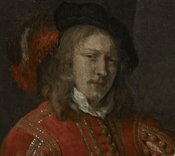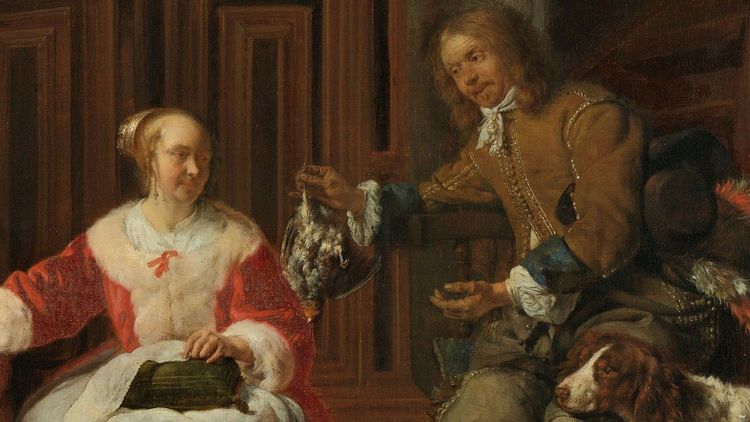
Gabriël Metsu
Gabriël Metsu's life story is one of achieving success through hard work and dedication to his craft. The dedication and diligence he poured into his paintings are evident in his works, which vividly bring the 17th-century society to life. This is precisely what Bas Zevenbergen does in the virtual museum of the fun part of art.
The life of Gabriël Metsu
Gabriël Metsu was born in 1629 in Leiden. His father, the Flemish painter Jacques Metsu, never met Gabriël as he passed away in the same year Gabriël was born. This left Gabriël's mother, Jacquemintje Garniers, widowed for the third time. She remarried for the fourth time in 1637 when Gabriël Metsu was eight years old.
Although he never had the opportunity to learn directly from his father, Gabriël Metsu was encouraged to pursue painting and did so with great passion. In 1643, at the age of fourteen or fifteen, he was one of the artists advocating for the establishment of a Sint-Lucas Guild in Leiden. When the guild was established in 1648, Gabriël Metsu became one of its founding members.
Metsu followed his heart and became a painter, but in the early years, he struggled to make a living from his art. Following in the footsteps of Gerard Dou he became a true Leiden fine painter, albeit initially without the same level of success as Dou or Frans van Mieris. It's possible that he didn't quite fit into the Leiden artistic community, and he was drawn more to the bustling city of Amsterdam. Ultimately, he settled there.
In Amsterdam, Gabriël Metsu became the successful painter he had always aspired to be. He lived on Prinsengracht and later on Leidsestraat. He had a strong network among fellow painters and art enthusiasts. In 1657, he married Isabella de Wolff from Enkhuizen. He passed away at the age of 38 in 1667, most likely due to a failed surgery. He was laid to rest in "his" Amsterdam.
Works of Gabriël Metsu
Gabriël Metsu painted scenes from daily life, often capturing brief, ordinary moments involving only a few individuals. His paintings typically depict only a small number of people, akin to a snapshot in time. Much like the works of Vermeer, his paintings give the impression of a photograph due to their precision and the sense that you are glimpsing an unguarded moment, as if the shutter was pressed a bit too early.
While Gabriël Metsu painted scenes from everyday life, his focus was primarily on the lives of the bourgeoisie and the upper class. You won't find the more common, folksy scenes seen in the works of Jan Steen, nor do his paintings carry Steen's self-deprecating humor or bravado. Metsu painted with a sense of restraint and calculation, understanding his audience and aiming not to shock.
From a technical perspective, Gabriël Metsu's paintings are flawless. He was every bit as accomplished as Gerard Dou or Frans van Mieris. His attention to detail is remarkable, everything is correct, and everything is depicted realistically. Yet, his work was often not as highly regarded as that of the great masters from Leiden.
Gabriël Metsu & the fun part of art
Gabriël Metsu was someone who pursued his dreams, following in the footsteps of a father he never knew. For Gabriël Metsu, painting was significant, but it's safe to assume that he also found joy in it: the fun part of art.

